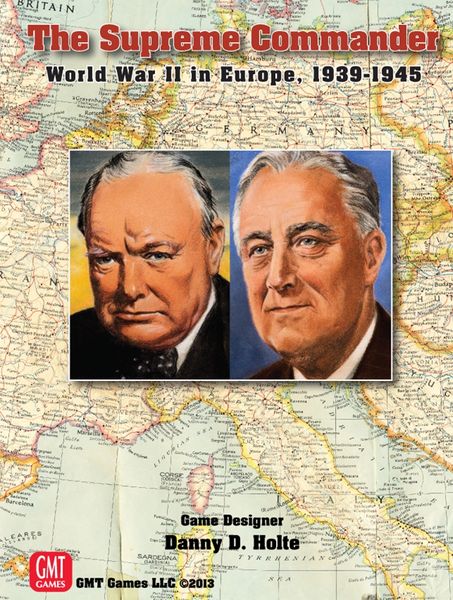The Supreme Commander: World War II in Europe, 1939-1945 (2013) Board Game
Brief History and Background Information
The Supreme Commander: World War II in Europe, 1939-1945 is a board game that allows players to recreate the major events of World War II in Europe. Designed by Danny Holte, Rodger B. MacGowan, and Mark Simonitch, this wargame offers a simulation of the strategic decisions made by the military leaders during the war. Published by GMT Games in 2013, it has become a popular choice for those interested in historical wargames.
Game Components of The Supreme Commander: World War II in Europe, 1939-1945
- Hexagon Grid board
- Counters representing military units
- Combat Results Table
- Rulebook
- Dice
How To Setup The Supreme Commander: World War II in Europe, 1939-1945
- Place the board in the center of the table.
- Distribute the military unit counters to each player.
- Set up the Combat Results Table within reach.
- Follow the rules for determining the starting player.
Gameplay Mechanics and Game Objective
Players take on the roles of military leaders during World War II, making strategic decisions and engaging in combat with the goal of achieving victory. The game uses a hexagon grid for movement and combat, with outcomes determined by a Ratio / Combat Results Table.
Player Experience
Pros:
- Offers a deep and immersive historical experience.
- Strategic decision-making is crucial for success.
- Allows for replayability with different outcomes each time.
Cons:
- Lengthy playing time may not be suitable for all players.
- Complex rules may require time to learn and master.
- Limited player interaction compared to other board games.
Personal Thoughts on The Supreme Commander: World War II in Europe, 1939-1945
The Supreme Commander: World War II in Europe, 1939-1945 is a comprehensive wargame that appeals to history buffs and strategy enthusiasts. The game’s build quality is solid, with detailed components that enhance the immersion factor. However, the game’s long playing time and complex rules may deter casual gamers. Additionally, the availability of both new and used copies can vary, affecting pricing. Alternatives like Axis & Allies offer a more streamlined experience for those looking for a quicker gameplay. Overall, The Supreme Commander: World War II in Europe, 1939-1945 is worth considering for players interested in a detailed and historically accurate wargame experience. However, those looking for a more casual or fast-paced game may want to skip it.
Game Components of The Supreme Commander: World War II in Europe, 1939-1945
How To Setup The Supreme Commander: World War II in Europe, 1939-1945
Setting up the game involves placing the game map, distributing the counters according to the initial setup charts, and preparing the various tracks and charts. The setup is detailed, with each player taking on the role of a major power (like Germany, the United Kingdom, or the Soviet Union), ensuring that all units and resources are correctly positioned as of September 1939.
Gameplay Mechanics and Game Objective
Player Experience
The game offers a deep and immersive experience, with playtime varying but typically lasting a weekend for the campaign game. The game is designed to be highly replayable, with each campaign game rarely playing the same way twice. Players must balance military strategy, economic management, and diplomatic maneuvers, making it a challenging yet rewarding experience.
Pros
Cons
Personal Thoughts on The Supreme Commander: World War II in Europe, 1939-1945
This game is ideal for experienced wargamers and those with a deep interest in World War II history. It offers a rich and detailed simulation of the European Theater, allowing players to delve into strategic and operational-level decision-making. While it may be daunting for new players due to its complexity, it is a rewarding experience for those who enjoy deep, immersive wargaming.
We are supported by our audience. When you purchase through links on our site, we may earn an affiliate commission, at no extra cost for you. Learn more.

